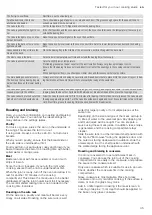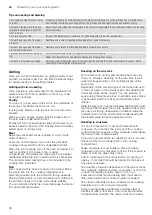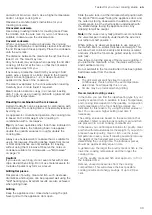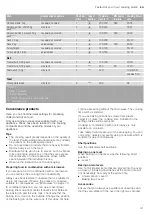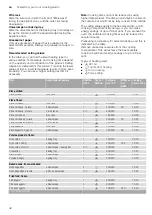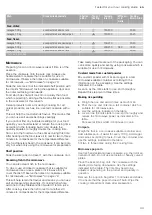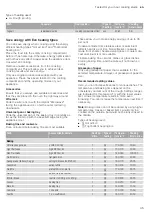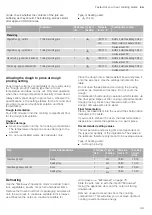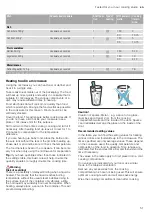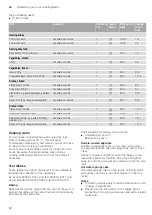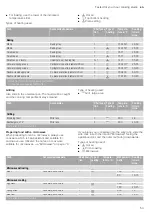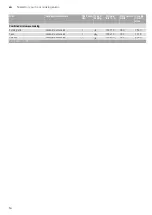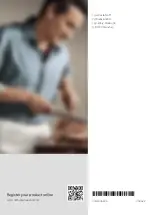
Tested for you in our cooking studio
en
49
mode, check whether the contents of the jars are
bubbling as they should. The bubbling process starts
after approx. 30-60 minutes.
Type of heating used:
■
‚
Hot air
Allowing the dough to prove at dough
proving setting
Yeast dough will prove considerably more quickly using
the "Dough proving" heating type than at room
temperature and does not dry out. Only start operation
when the cooking compartment has fully cooled down.
Always allow yeast dough to prove twice. Observe the
specifications in the settings tables for the 1st and 2nd
proving processes (dough fermentation and final
fermentation).
Dough fermentation
Pour 200 ml water onto the cooking compartment floor
for the dough fermentation.
Caution!
Surface damage
■
Never pour water into the hot cooking compartment.
The temperature change can cause damage to the
enamel.
■
Do not use distilled water. Use tap water only.
Place the dough into a heat-resistant bowl and place it
onto the wire rack. Use the settings indicated in the
table.
Do not open the appliance door during the proving
process, as moisture will escape. Do not cover the
dough.
Condensation builds during operation which steams up
the door pane. Wipe out the cooking compartment after
dough proving. Loosen any limescale with a little
vinegar and wipe with clean water.
Final fermentation
Place your baked item into the oven at the shelf position
indicated in the table.
If you want to preheat the oven, the final fermentation
takes place outside the appliance in a warm place.
Recommended setting values
The temperature and proving time are dependent on
the type and quantity of the ingredients. The values in
the table are therefore only meant to be average values.
Type of heating used:
■
Œ
Dough proving
Defrosting
Use the "Microwave" operation mode to defrost frozen
fruit, vegetables, poultry, meat, fish and baked items.
Remove the frozen food from its packaging and place it
onto the wire rack in cookware suitable for microwave
use. Observe the notes on cookware suitable for
Slide the wire rack in with the imprint "Microwave"
facing the appliance door and the outer rail facing
downwards.
Remove unused accessories from the cooking
compartment. This will allow you to achieve optimum
cooking results and save energy.
Dish
Cookware
Shelf posi-
tion
Type of
heating
Tempera-
ture in °C
Cooking time in mins.
Preserving
Vegetables, e.g. carrots
1-litre preserving jars
1
‚
160-170
Before it starts bubbling: 30-40
120
When it starts to bubble: 30-40
-
Residual heat: 30
Vegetables, e.g. cucumbers
1-litre preserving jars
1
‚
160-170
Before it starts bubbling: 30-40
-
Residual heat: 30
Stone fruit, e.g. cherries, damsons 1-litre preserving jars
1
‚
160-170
Before it starts bubbling: 30-40
-
Residual heat: 35
Pomes, e.g. apples, strawberries
1-litre preserving jars
1
‚
160-170
Before it starts bubbling: 30-40
-
Residual heat: 25
Dish
Accessories/cookware
Shelf posi-
tion
Type of
heating
Tempera-
ture in °C
Cooking
time in
mins.
Yeast dough, light
Bowl
1
Œ
35-40
25-30
Baking tray
1
Œ
35-40
10-20
Yeast dough, heavy and rich
Bowl
1
Œ
35-40
20-40
Baking tray
1
Œ
35-40
15-25
Содержание C27MS22.0B
Страница 1: ...en INSTRUCTION MANUAL Built in oven C27MS22 0B...
Страница 2: ......
Страница 55: ...6...

